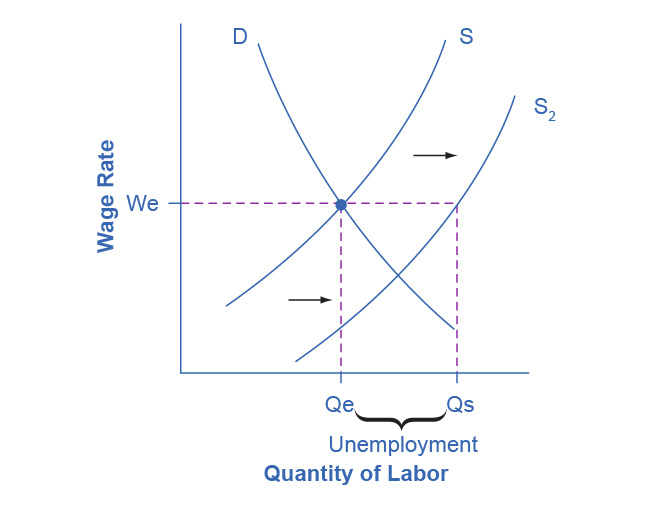142 Chapter 6 Unemployment Answer Key
Chapter 6 Unemployment Answer Key
1. The population is divided into those “in the labor force” and those “not in the labor force.” Thus, the number of adults not in the labor force is 237.8 – 153.9 = 83.9 million. Since the labor force is divided into employed persons and unemployed persons, the number of unemployed persons is 153.9 – 139.1 = 14.8 million. Thus, the adult population has the following proportions:
- 139.1/237.8 = 58.5% employed persons
- 14.8/237.8 = 6.2% unemployed persons
- 83.9/237.8 = 35.3% persons out of the labor force
2. The unemployment rate is defined as the number of unemployed persons as a percentage of the labor force or 14.8/153.9 = 9.6%. This is higher than the February 2015 unemployment rate, computed earlier, of 5.5%.
3. Over the long term, the U.S. unemployment rate has remained basically the same level.
4. Non-White people
- The young
- High school graduates
5. Because of the influx of women into the labor market, the supply of labor shifts to the right. Since wages are sticky downward, the increased supply of labor causes an increase in people looking for jobs (Qs), but no change in the number of jobs available (Qe). As a result, unemployment increases by the amount of the increase in the labor supply. This can be seen in the following figure.
Over time, as labor demand grows, the unemployment will decline and eventually wages will begin to increase again. But this increase in labor demand goes beyond the scope of this problem.
6. The increase in labor supply was a social demographic trend—it was not caused by the economy falling into a recession. Therefore, the influx of women into the work force increased the natural rate of unemployment.
7. New entrants to the labor force, whether from college or otherwise, are counted as frictionally unemployed until they find a job.
Access for free at https://openstax.org/books/principles-economics-3e


